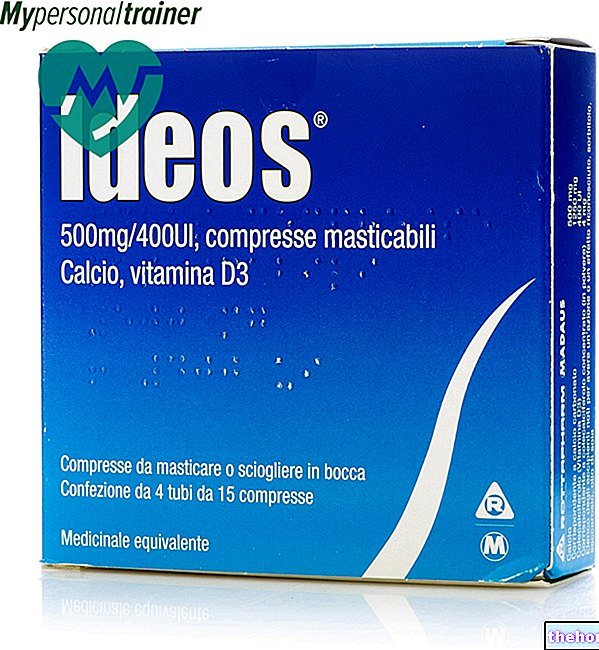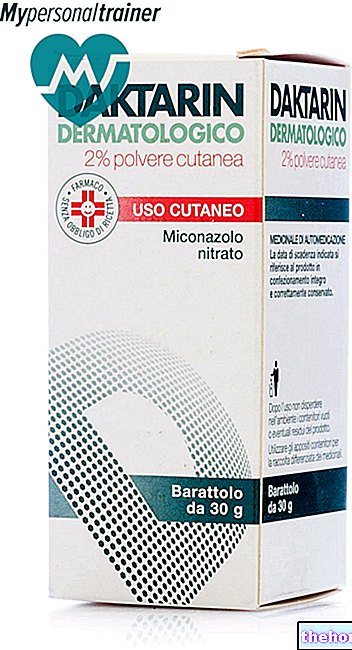Active ingredients: Loperamide (Loperamide hydrochloride)
IMODIUM 2 mg soft capsules
Imodium package inserts are available for pack sizes:- IMODIUM 2 mg soft capsules
- IMODIUM 2 mg buccal tablets
- IMODIUM 2 mg hard capsules
Indications Why is Imodium used? What is it for?
This medicine contains loperamide hydrochloride, an active ingredient that acts on the intestine by reducing bowel movements and the urge to bowel.
IMODIUM is indicated for the symptomatic treatment of occasional (acute) diarrhea.
Talk to your doctor if you do not feel better or if you feel worse after 2 days of treatment.
Contraindications When Imodium should not be used
Do not take IMODIUM if:
- you are allergic to the active substance to any of the other ingredients of this medicine (listed in section 6);
- are pregnant or breastfeeding;
- have a high fever and blood in the stool (signs of acute dysentery);
- suffer from an "inflammation of the gut" called ulcerative colitis;
- have diarrhea caused by the use of antibiotics (pseudomembranous colitis);
- have a "gut infection" caused by bacteria such as Salmonella, Shigella and Campilobacter;
- you are using drugs that reduce bowel movements;
IMODIUM should not be given to children less than 6 years of age.
Precautions for use What you need to know before taking Imodium
Warnings and Precautions
Talk to your doctor or pharmacist before taking IMODIUM.
Pay particular attention:
- if you have diarrhea your body loses fluids and mineral salts: to restore normal levels, it may be useful to take aqueous solutions based on sugar and salts;
- treatment with IMODIUM is only symptomatic and does not serve to eliminate the cause of your disorder;
- if you have impaired liver function, talk to your doctor or pharmacist before taking IMODIUM.
Stop treatment with IMODIUM immediately and consult your doctor:
- if you have AIDS and notice swelling of the abdomen;
- if you notice difficulty in defecating (constipation), swelling and / or pain in the abdomen.
Talk to your doctor if you do not feel better or if you feel worse after 2 days of treatment or if the disorder occurs repeatedly.
Children from 6 to 12 years of age
IMODIUM must be used under medical supervision.
Interactions Which drugs or foods can modify the effect of Imodium
Tell your doctor or pharmacist if you are taking, have recently taken or might take any other medicines. This is especially important if you are taking:
- quinidine (drug used in heart rhythm disorders);
- ritonavir (drug used in virus infections);
- ketoconazole and itraconazole (drugs used in fungal infections);
- gemfibrozil (drug that lowers fat levels in the blood);
- desmopressin (drug used for example in type 1 diabetes);
- drugs with effects similar to those of IMODIUM;
- drugs that speed up or slow down intestinal peristalsis (eg anticholinergics);
- drugs that inhibit cytochrome CYP450.
Warnings It is important to know that:
Pregnancy and breastfeeding
If you are pregnant or breast-feeding do not take IMODIUM.
Driving and using machines
IMODIUM can cause tiredness, dizziness or lightheadedness. Take special care before driving or using machines.
Dose, Method and Time of Administration How to use Imodium: Posology
Always take this medicine exactly as described in this leaflet or as directed by your doctor or pharmacist. If in doubt, consult your doctor or pharmacist.
Take IMODIUM soft capsules by mouth (orally) with some water.
Adults
Start treatment with 2 capsules (4 mg); if necessary, continue with 1 capsule (2 mg) after each subsequent emptying of unformed stools. The maximum dose is 8 capsules per day (16 mg).
Children and adolescents (aged 6-17 years)
Start the treatment with 1 capsule (2mg); if necessary, continue with 1 capsule (2 mg) after each subsequent emptying of unformed stools.
The maximum dose must be calculated on the basis of body weight (3 capsules per 20 kg), but should not exceed 8 capsules per day.
In children 6 to 12 years of age, IMODIUM should be used under medical supervision.
Stop using IMODIUM when your stools return to normal, or if you have not had any bowel movements for 12 hours or if you have difficulty with bowel movements (constipation).
However, do not use IMODIUM for more than 2 days. After this period without appreciable results, stop the treatment and consult your doctor.
Overdose What to do if you have taken too much Imodium
If you accidentally ingest / take an overdose of IMODIUM, you may notice: drowsiness, muscle stiffness or uncoordinated movements, contracted pupils, difficulty breathing, numbness (depression of the nervous system), difficulty or inability to evacuate (constipation or intestinal obstruction) and decreased diuresis (urinary retention). These effects are more likely to occur in children, especially under 4 years of age.
Contact your doctor immediately or go to the nearest hospital as appropriate therapy needs to be instituted.
Side Effects What are the side effects of Imodium
Like all medicines, this medicine can cause side effects, although not everybody gets them.
Stop taking IMODIUM and see your doctor immediately if you notice:
- severe allergic reactions (anaphylactic or anaphylactoid reactions) which may occur with skin rashes, swelling of the hands, feet, face, eyes, lips, throat, difficulty in breathing or a sharp drop in blood pressure;
- swelling of the abdomen associated with pain, nausea, vomiting, inability to evacuate, signs of intestinal obstruction or megacolon;
- severe skin rashes with redness, peeling and / or blistering (eg Steven-Johnson syndrome, toxic epidermal necrolysis).
Other side effects that may occur are:
Headache (headache), dizziness, sleepiness.
Difficulty in evacuating (constipation), nausea, gas in the abdomen (flatulence), swelling of the abdomen.
Pain or discomfort in the abdomen (especially located in the upper part of the abdomen), dry mouth, vomiting, indigestion (dyspepsia).
Skin rashes, characterized by blisters, spots on the skin (hives) and / or itching.
Pain in the tongue (glossodynia).
Contraction of the pupil (miosis).
Decreased diuresis (urinary retention). Complete arrest of movements with detachment from external reality (stupor), slowing of mental functions (decreased level of consciousness), fainting (loss of consciousness), increased muscle tone (hypertonia), impaired coordination of muscles, fatigue.
Reporting of side effects
If you get any side effects, talk to your doctor or pharmacist. This includes any possible side effects not listed in this leaflet. You can also report side effects directly via the national reporting system at “www.agenziafarmaco.gov.it/it/responsabili.” By reporting side effects you can help provide more information on the safety of this medicine.
Expiry and Retention
Keep this medicine out of the sight and reach of children.
Store at a temperature not exceeding 25 ° C.
Do not use this medicine after the expiry date which is stated on the package. The expiry date refers to the last day of that month.
Do not throw any medicines via wastewater or household waste. Ask your pharmacist how to throw away medicines you no longer use. This will help protect the environment.
Composition and pharmaceutical form
What IMODIUM contains
The active ingredient is: loperamide hydrochloride. One soft capsule contains: 2 mg of loperamide hydrochloride. The other components are: propylene glycol monocaprilat, propylene glycol, distilled water, gelatin, glycerol 99%, FD & C blue n. 1.
Description of the appearance of IMODIUM and contents of the pack
IMODIUM 2 mg soft capsule is available in a carton containing 12 capsules.
Source Package Leaflet: AIFA (Italian Medicines Agency). Content published in January 2016. The information present may not be up-to-date.
To have access to the most up-to-date version, it is advisable to access the AIFA (Italian Medicines Agency) website. Disclaimer and useful information.
01.0 NAME OF THE MEDICINAL PRODUCT
IMODIUM
02.0 QUALITATIVE AND QUANTITATIVE COMPOSITION
One hard capsule contains:
Active ingredient: Loperamide hydrochloride 2 mg.
One effervescent tablet contains:
Active ingredient: Loperamide hydrochloride 2 mg.
One buccal tablet contains:
Active ingredient: Loperamide hydrochloride 2mg.
One soft capsule contains:
Active ingredient: Loperamide hydrochloride 2mg.
For the full list of excipients, see section 6.1.
03.0 PHARMACEUTICAL FORM
Hard capsules.
Effervescent tablets.
Buccal tablets.
Soft capsules.
04.0 CLINICAL INFORMATION
04.1 Therapeutic indications
IMODIUM is indicated for the symptomatic treatment of acute diarrhea.
04.2 Posology and method of administration
Adults and children between the ages of 6 and 17. (see paragraph 4.3):
IMODIUM 2 mg hard capsules: The starting dose is 2 capsules (4 mg) for adults and 1 capsule (2 mg) for children to be taken by mouth with some liquid.
IMODIUM 2 mg effervescent tablets: The starting dose is 2 effervescent tablets (4 mg) for adults and 1 effervescent tablet (2 mg) for children to be taken dissolved in a glass of plenty of water.
IMODIUM 2 mg buccal tablets: The initial dose is 2 buccal tablets (4 mg) for adults and 1 buccal tablet (2 mg) for children to be left to dissolve for a few seconds on the tongue.
IMODIUM 2 mg soft capsules: The starting dose is 2 soft capsules (4 mg) for adults and 1 soft capsule (2 mg) for children to be taken by mouth to be taken with some liquid.
Thereafter 1 capsule or 1 effervescent tablet or 1 buccal tablet (2 mg) or a soft capsule (2 mg) after each subsequent evacuation of unformed (soft) stool.
Attention: for adults the maximum daily dose is 8 capsules or tablets per day (16 mg). For children, the dose should be related to body weight (3 capsules or tablets / 20 kg) but should not exceed a maximum of 8 tablets per day.
Do not use for more than 2 days. In fact, in episodes of acute diarrhea, loperamide HCl is generally able to stop the symptoms within 48 hours. After this period without appreciable results, stop the treatment and consult your doctor. The treatment, in any case, must be interrupted when the stool is normalized, or if there have been no bowel movements for 12 hours, or if constipation appears.
Senior citizens
No dose adjustment is necessary in the elderly.
Renal dysfunction
No dose adjustment is required in patients with renal dysfunction.
Hepatic dysfunction
Although no data are available in patients with hepatic dysfunction, loperamide HCl should be used with caution in these patients due to impaired first pass metabolism (see section 4.4 "Special warnings and precautions for use").
04.3 Contraindications
Not for use in children under 6 years of age.
Pregnancy and lactation (see section 4.6 "Pregnancy and lactation")
Loperamide HCl should not be used as attack therapy in acute dysentery characterized by the presence of blood in the stool and high fever.
Furthermore, IMODIUM should not be administered to patients with acute ulcerative colitis or pseudomembranous colitis due to the use of broad-spectrum antibiotics nor should it be administered to patients with bacterial enterocolitis caused by invasive organisms including Salmonella, Shigella and Campilobacter. In general, use of Loperamide HCl is contraindicated in all cases where inhibition of peristalsis must be initiated due to the possible risk of significant consequences such as ileus, megacolon and toxic megacolon. If constipation, abdominal distension or sub-ileus occurs, stop treatment immediately.
04.4 Special warnings and appropriate precautions for use
Treatment of diarrhea with Loperamide HCl is symptomatic only. Therefore, where possible, it is also advisable to intervene on the causes of the disorder.
Fluid and electrolyte depletion may occur in patients with diarrhea, especially children. In such cases it can be very important to properly replenish the fluids and electrolytes themselves.
For this reason, IMODIUM 2 mg effervescent tablets contain the elements to replenish these losses.
Each effervescent tablet provides 500 mg of glucose and the following supply of electrolytes:
sodium 260 mg (11.3 meq);
potassium 80 mg (2.0 meq);
chloride 234 mg (6.6 meq).
Each effervescent tablet contains 0.5 g of glucose: this should be taken into account for people with diabetes.
Treatment with Loperamide HCl should be discontinued if no improvement in clinical symptoms occurs within 48 hours after initiation of therapy and the patient should consult their physician.
Loperamide is subject to an intense first pass metabolism.
The drug should be used with caution in patients with hepatic insufficiency as it can lead to a relative overdose with CNS toxicity.
AIDS patients treated with Loperamide HCl for diarrhea should discontinue therapy at the first signs of abdominal distension. In these patients with infectious colitis of bacterial or viral origin, treated with loperamide hydrochloride, there have been isolated cases of constipation with an increased risk of toxic megacolon.
Imodium 2 mg hard capsules contains lactose. Patients with rare hereditary problems of galactose intolerance, the lapp lactase deficiency, or glucose-galactose malabsorption should not take this medicine.
Imodium 2 mg effervescent tablets contain sorbitol and glucose, therefore it is not suitable for people with rare hereditary problems of fructose intolerance or glucose / galactose malabsorption.
In children between 6 and 12 years of age, Imodium should only be used under medical supervision.
Imodium 2 mg hard capsules: 8 capsules - swallow the capsules with a little water.
Imodium 2 mg effervescent tablets: 10 tablets - dissolve the effervescent tablet in a glass of water.
Imodium 2 mg buccal tablets : 12 tablets - Place the tablet on the tongue. The tablet will dissolve quickly from the saliva. Imodium 2 mg buccal tablets do not require the use of water.
Imodium 2 mg soft capsules: 12 soft capsules - swallow the capsules with a little water.
04.5 Interactions with other medicinal products and other forms of interaction
Non-clinical data have shown that loperamide is a substrate of P-glycoprotein.
Concomitant administration of loperamide (single dose of 16 mg) with quinidine and ritonavir (both P-glycoprotein inhibitors) resulted in 2 to 3-fold increases in plasma loperamide levels.
The clinical relevance of this pharmacokinetic interaction with P-glycoprotein inhibitors when loperamide is administered at recommended doses (2 to a maximum of 16 mg per day) is unknown.
Concomitant administration of loperamide (single 4 mg dose) and itraconazole, an inhibitor of CYP3A4, and of P-glycoprotein, showed a 3-4-fold increase in plasma levels of loperamide. In the same study, gemfibrozil, a CYP2C8 inhibitor showed a 2-fold increase in plasma loperamide levels. The combination of itraconazole and gemfibrozil showed a 4-fold increase in plasma loperamide peak level and a 13-fold increase in total plasma exposure. were associated with central nervous system (CNS) effects as detected by psychomotor tests (e.g. subjective dizziness and the Digit Symbol Substitution Test).
Concomitant administration of loperamide (single dose of 16 mg) and ketoconazole, an inhibitor of CYP3A4, and P-glycoprotein, resulted in a 5-fold increase in plasma levels of loperamide. This increase was not associated with an increase in pharmacodynamic effects as detected by pupillometry.
Concomitant treatment with oral desmopressin resulted in a 3-fold increase in plasma desmopressin concentrations presumably due to slowed gastrointestinal motility. The concomitant use of CYP450 inhibitors is not recommended.
Concomitant treatment with substances with similar pharmacological properties can enhance the effect of loperamide and substances that accelerate gastrointestinal transit can diminish its effect.
Interactions are possible with drugs having pharmacological properties similar to those of loperamide or drugs that can slow intestinal peristalsis (eg anticholinergics), as the effects of IMODIUM could be enhanced.
04.6 Pregnancy and lactation
The administration of Imodium during pregnancy is not recommended. Pregnant or lactating women should therefore consult their doctor for appropriate treatment.
04.7 Effects on ability to drive and use machines
Loperamide HCl can cause tiredness, dizziness or lightheadedness. It is therefore preferable to exercise caution when driving vehicles or operating dangerous machinery.
04.8 Undesirable effects
Adults and children aged ≥12 years
The safety of Loperamide HCl was evaluated in 3076 adult and child subjects ≥12 years of age who participated in 31 controlled and uncontrolled clinical trials with Loperamide HCl used for the treatment of diarrhea. Of these, 26 studies involved acute diarrhea (N = 2755) and 5 chronic diarrhea (N = 321).
The most commonly reported adverse drug reactions (ADRs) (ie with an "incidence ≥1%) in clinical trials with Loperamide HCl for the treatment of acute diarrhea were as follows: constipation (2.7%), flatulence ( 1.7%), headache (1.2%) and nausea (1.1%). In clinical trials for the treatment of chronic diarrhea, the most commonly reported ADRs (i.e. ≥1% incidence) were following: flatulence (2.8%), constipation (2.2%), nausea (1.2%) and dizziness (1.2%).
Table 1 shows the ADRs that have been reported with the use of Loperamide HCl both in clinical trials (in acute or chronic diarrhea, or both), and in post-marketing experience.
By convention, based on their frequency, undesirable effects have been divided into the following categories: very common (≥1 / 10); common (≥1 / 100 to
Table 1: Adverse reactions
a The inclusion of this term is based on post-marketing reports for Loperamide HCl. Since the post-marketing ADR determination process did not differentiate between indications of chronic or acute diarrhea, nor between adult and pediatric subjects, the frequency is estimated on the basis of basis of all clinical trials with Loperamide HCl combined, including trials conducted in children aged ≤12 years (N = 3683).
b See section 4.4 Special warnings and precautions for use.
c Reported only in case of buccal tablets.
For ADRs reported in clinical trials for which frequency is not presented, the term was not observed or considered an ADR for this indication.
Children
The safety of Loperamide HCl was evaluated in 607 patients aged 10 days to 13 years, who took part in 13 controlled and uncontrolled clinical trials with Loperamide HCl used for the treatment of acute diarrhea. In general, the profile of ADRs in this patient population was similar to that observed in clinical trials with Loperamide HCl used in adults and children aged 12 years and over.
Reporting of suspected adverse reactions.
Reporting of suspected adverse reactions occurring after authorization of the medicinal product is important as it allows continuous monitoring of the benefit / risk balance of the medicinal product. Healthcare professionals are asked to report any suspected adverse reactions via the national reporting system. "Street address www.aifa.gov.it/responsabili.
04.9 Overdose
Symptoms
CNS depression (stupor, uncoordinated movements , somnolence, miosis, muscle hypertonia, respiratory depression), intestinal obstruction and urinary retention.
Children are more sensitive than adults to the effects of an IMODIUM overdose. Therefore it is recommended to keep the product out of their reach because accidental ingestion, especially in children under the age of 4, can cause constipation and central nervous system depression with drowsiness and slowed breathing.
Measures in case of overdose: gastric lavage, induction of vomiting, enema or administration of laxatives.
Urgent measures: Administer naloxone and possibly repeat the treatment after 1-3 hours as loperamide has a longer duration of action than that of the antidote.
It would be advisable, then, to monitor the patient for at least 48 hours to highlight any aggravation of the depression of the central nervous system.
05.0 PHARMACOLOGICAL PROPERTIES
05.1 Pharmacodynamic properties
Pharmacotherapeutic group: antipropulsants.
ATC code: A07DA03.
Loperamide binds to the opioid receptors of the intestinal part, resulting in inhibition of the release of acetylcholine and prostaglandins. Therefore, propulsive peristalsis is reduced and intestinal transit time increases. Loperamide also increases the tone of the anal sphincter, with a consequent reduction in incontinence and stimulus.
Due to the remarkable affinity for the intestinal wall and the high first pass effect, loperamide hardly enters the systemic circulation.
Studies conducted in rats have shown the presence of antiperistaltic, antidiarrheal and spasmolytic activity for loperamide. Absent a "central analgesic activity.
05.2 Pharmacokinetic properties
Loperamide is readily absorbed from the intestine, but is almost completely extracted from the liver, where it is metabolized, conjugated and excreted via the bile.
The half-life of loperamide in humans is approximately 11 hours with a range of approximately 9-14 hours. Distribution studies in rats demonstrate a "high affinity for the gut walls" with a preference for binding to receptors in the longitudinal muscle layer.
Excretion occurs mainly with faeces (90% of the administered quantity).
The urinary excretion of loperamide in the active form is equal to 1% of the administered dose: the total urinary excretion (active form + metabolites) represents about 10% of the administered quantity being the drug mainly excreted in the faeces.
05.3 Preclinical safety data
Toxicity studies on loperamide conducted up to 12 months in dogs and up to 18 months in rats have shown no other toxic effect than a reduction in weight gain and food consumption at daily doses up to 5mg / kg / day ( 30 times the maximum level for human use - MHUL) and 40 mg / Kg / day (240 MHUL) respectively.
The no-toxic effect levels (NTELs) in these studies were: 1.25 mg / kg / day (8 times the MHUL) and 10 mg / kg / day (60 times the MHUL) in dogs and rats, respectively.
The results of in vivo and in vitro studies indicate that loperamide is not genotoxic.
There is no carcinogenic potential. In reproductive studies in rats, very high doses of loperamide (40 mg / kg / day - 240 times the MHUL) impair fertility and fetal survival in association with maternal toxicity. Lower doses do not. they have an effect on maternal or fetal health and do not affect peri and postnatal development.
Fetal toxicity: absent (rat, os): 20 mg / kg / day, (rabbit, os): 10 mg / kg / day. Carcinogenesis: absent in the rat. Embryotoxic, teratogenic activity on fertility: absent.
06.0 PHARMACEUTICAL INFORMATION
06.1 Excipients
Imodium 2 mg hard capsules: lactose, corn starch, talc, magnesium stearate.
A gray-green hard capsule consists of: erythrosine (E 127); indigo carmine (E 132); yellow iron oxide (E 172); black iron oxide (E 172); titanium dioxide and gelatin to taste to one capsule.
Imodium 2 mg effervescent tablets: anhydrous citric acid, sodium bicarbonate, sodium chloride, potassium chloride, anhydrous glucose, sorbitol, macrogol 6000, sodium saccharin, lemon flavor powder.
Imodium 2 mg buccal tablets: gelatin, mannitol, aspartame, mint flavor, sodium bicarbonate.
Imodium 2 mg soft capsules:
Capsule contents: Propylene glycol monocaprilat, Propylene glycol, Distilled water
Capsule shell: Gelatin, Glycerol 99%, Propylene glycol, FD & C blue n. 1.
06.2 Incompatibility
There are no known chemical or physico-chemical incompatibilities with the product.
06.3 Period of validity
Imodium 2 mg hard capsules: 5 years.
Imodium 2 mg effervescent tablets: 3 years.
Imodium 2 mg buccal tablets: 3 years.
Imodium 2 mg soft capsules: 2 years.
06.4 Special precautions for storage
Store in the original package to protect the medicine from moisture.
Soft capsules: Do not store above 25 ° C. Keep the blister in the original package in order to protect from light.
06.5 Nature of the immediate packaging and contents of the package
Imodium 2 mg hard capsules: Lithographed cardboard box containing the package leaflet and an opaque PVC / Al blister of 8 dosage units.
Imodium 2 mg effervescent tablets: Lithographed cardboard box containing the leaflet and 1 PP container containing 10 tablets / cd.
Imodium 2 mg buccal tablets : Lithographed cardboard box containing the package leaflet and an opaque aluminum blister of 12 dosage units.
Imodium 2 mg soft capsules: Lithographed cardboard box containing the package leaflet and a PVC / PVDC / Al blister of 12 dosage units.
06.6 Instructions for use and handling
No special instructions
07.0 MARKETING AUTHORIZATION HOLDER
Johnson & Johnson SpA
Via Ardeatina km 23,500 00040 Santa Palomba Pomezia (ROME)
08.0 MARKETING AUTHORIZATION NUMBER
Imodium 2 mg hard capsules in packs of 8 A.I.C. 023673066
Imodium 2 mg effervescent tablets in pack of 10 A.I.C. 023673078
Imodium 2 mg buccal tablets in packs of 12 A.I.C. 023673092
Imodium 2 mg soft capsules in packs of 12 A.I.C. 023673104
09.0 DATE OF FIRST AUTHORIZATION OR RENEWAL OF THE AUTHORIZATION
Date of first authorization: 02/03/1998
10.0 DATE OF REVISION OF THE TEXT
December 2013.




























